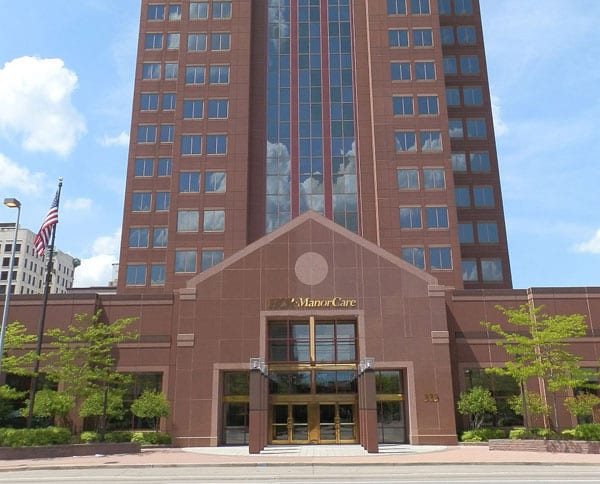
November 25, 2018; Washington Post
At NPQ, we have noted that with nursing care, nonprofit providers routinely out-perform for-profit providers. Now, courtesy of Washington Post reporters Peter Whoriskey and Dan Keating, we have another case study of the perils of for-profit care.
Nursing home chain HCR ManorCare (ManorCare), the nation’s second-largest nursing home chain, which Carlyle, a private equity firm, had acquired in 2011 declared bankruptcy this past March. This might seem to be a story of just another failing business, but of course many entrust their loved ones’ lives to nursing homes. As Whoriskey and Keating detail, the consequences of poor care at ManorCare, based on records of state inspectors (in this case, from Pennsylvania) were heartbreaking:
A disabled man who had long, dirty fingernails…was tended to “once in a blue moon.” The bedside “call buttons” were so poorly staffed that some residents regularly soiled themselves while waiting for help to the bathroom. A woman dying of uterine cancer was left on a bedpan for so long that she bruised…
One man had been dosed with so many opioids that he had to be rushed to a hospital, according to the inspection reports. During an under-supervised bus trip to church—one staff member was escorting six patients who could not walk without help—a resident flipped backward on a wheelchair ramp and suffered a brain hemorrhage.
When a nurse’s aide who should have had a helper was trying to lift a paraplegic woman, the woman fell and fractured her hip, her head landing on the floor beneath her roommate’s bed.
Debbie Bojo, whose mother was treated at ManorCare’s Pottsville facility in September 2016, tells Whoriskey and Keating that, “It was horrible—my mom would call us every day crying when she was in there. It was dirty—like a run-down motel. Roaches and ants all over the place.”
All told, Whoriskey and Keating write that, “During the five years preceding the bankruptcy, the second-largest nursing-home chain in the United States exposed its roughly 25,000 patients to increasing health risks,” with health-code violations totally nearly 2,000 in its final year of operations.
“The number of citations increased,” they add, for “among other things, neither preventing nor treating bed sores; medication errors; not providing proper care for people who need special services such as injections, colostomies and prostheses; and not assisting patients with eating and personal hygiene.”
Sign up for our free newsletters
Subscribe to NPQ's newsletters to have our top stories delivered directly to your inbox.
By signing up, you agree to our privacy policy and terms of use, and to receive messages from NPQ and our partners.
How did this happen? ManorCare was run by Carlyle, a private equity group. Typically, as the name “private equity” suggests, company affairs stay private. But the bankruptcy provides a window into how a for-profit model led to harm for so many.
Whoriskey and Keating observe that, “The rise in health-code violations at the chain began after Carlyle and investors completed a 2011 financial deal that extracted $1.3 billion from the company for investors but also saddled the chain with what proved to be untenable financial obligations.” A key element of the deal, as part of the sale to Carlyle, was that ManorCare sold nearly all of its real estate and instead paid rent to the new owners.
As Whoriskey and Keating explain, “Carlyle took HCR ManorCare’s vast real estate empire—the hundreds of nursing homes and assisted living facilities as well as the land underneath—and sold it to HCP, a real estate investment company. HCR ManorCare then had to pay rent to HCP for the use of the nursing homes.”
The deal, known as a sale-leaseback, is a common strategy that private-equity firms use to extract financial benefits for their investors. “Carlyle,” Whoriskey and Keating note, “got $6.1 billion from the sale, an amount that roughly matched the price that the private-equity firm had paid to buy the company just four years prior.”
But then ManorCare had to pay rent on the property it used to own, $472 million a year, with a 3.5-percent lease escalator. According to the terms of its lease, Manor Care also still had to pay for property taxes, insurance, and upkeep at the homes. The result, “Shortly after the maneuver, the company announced hundreds of layoffs. In a little over a year, some nursing homes were not making enough to pay rent.”
“The short-staffing was to the extent that it was very dangerous for the residents,” Lisa Kay Wasnowic, who worked off and on at the Allentown ManorCare from 2004 to 2014, tells Whoriskey and Keating. “At times, it was just one aide for 60 patients. And it just kept on getting worse.”
Did any good come of this?
Well, there is one silver lining. “After the bankruptcy, the nursing home chain was acquired by Promedica Health, a nonprofit group. A statement from reconstituted, now nonprofit-owned, ManorCare indicates that, “We look forward to being a not-for-profit, mission-focused organization.”—Steve Dubb












